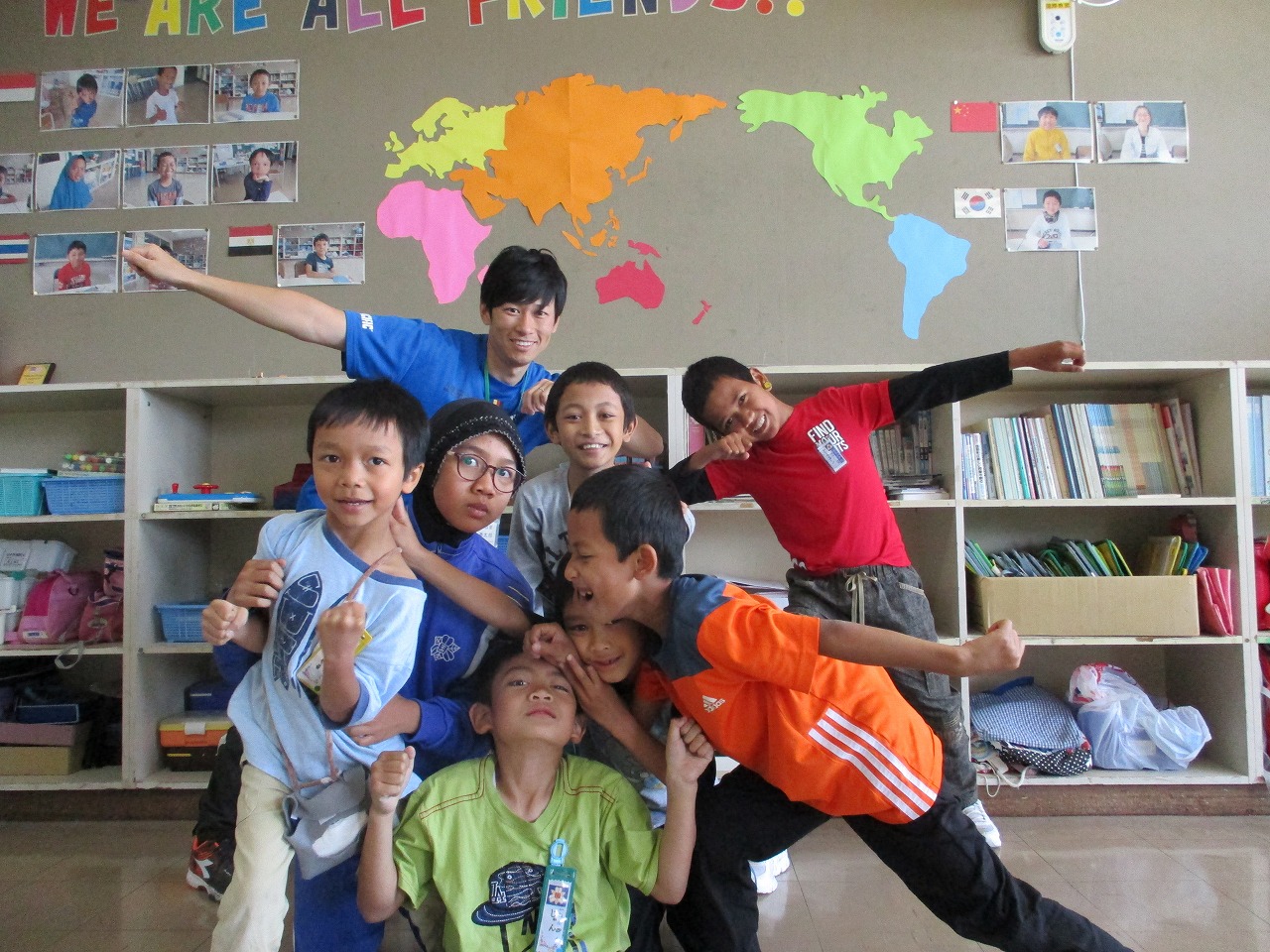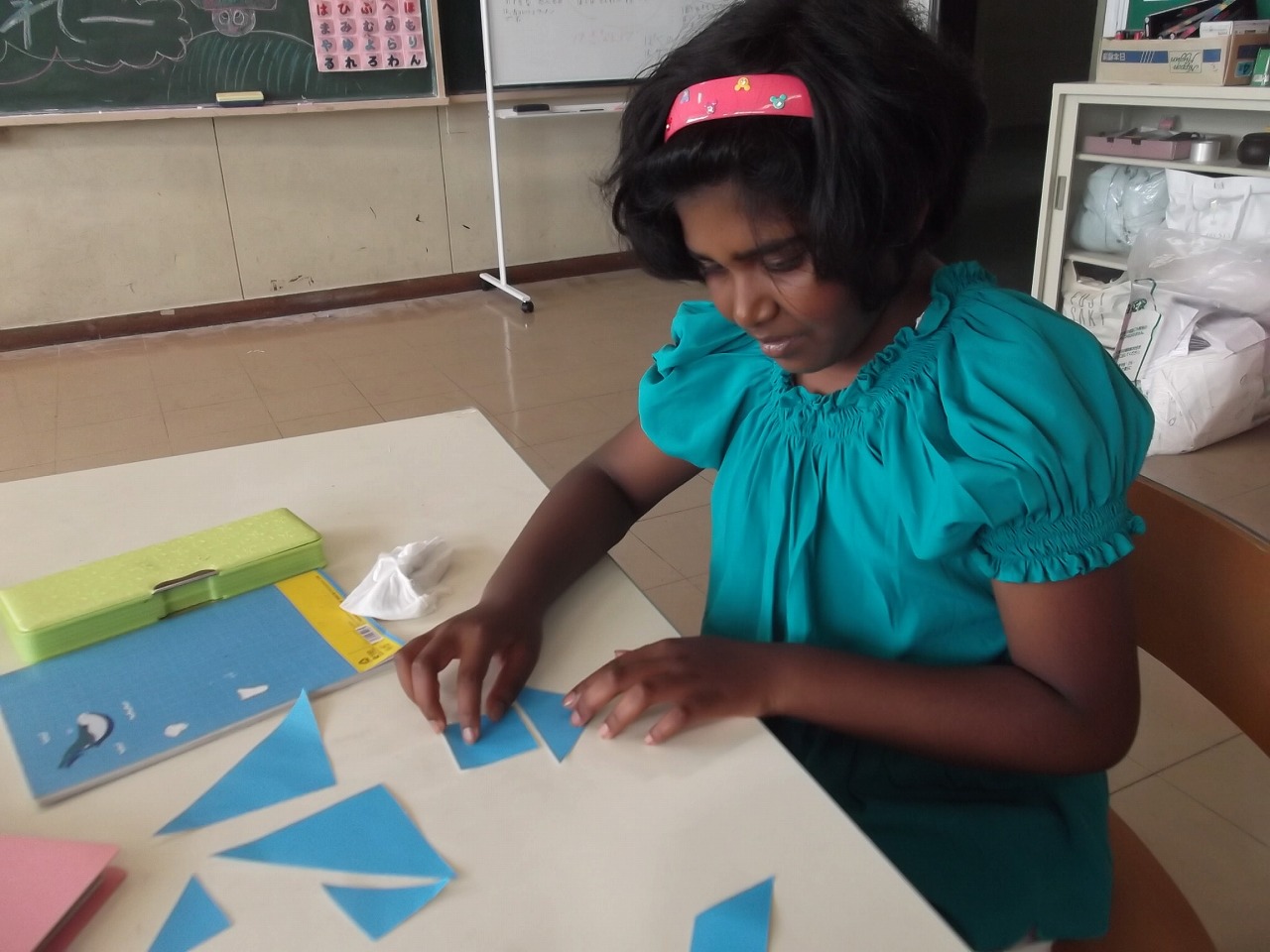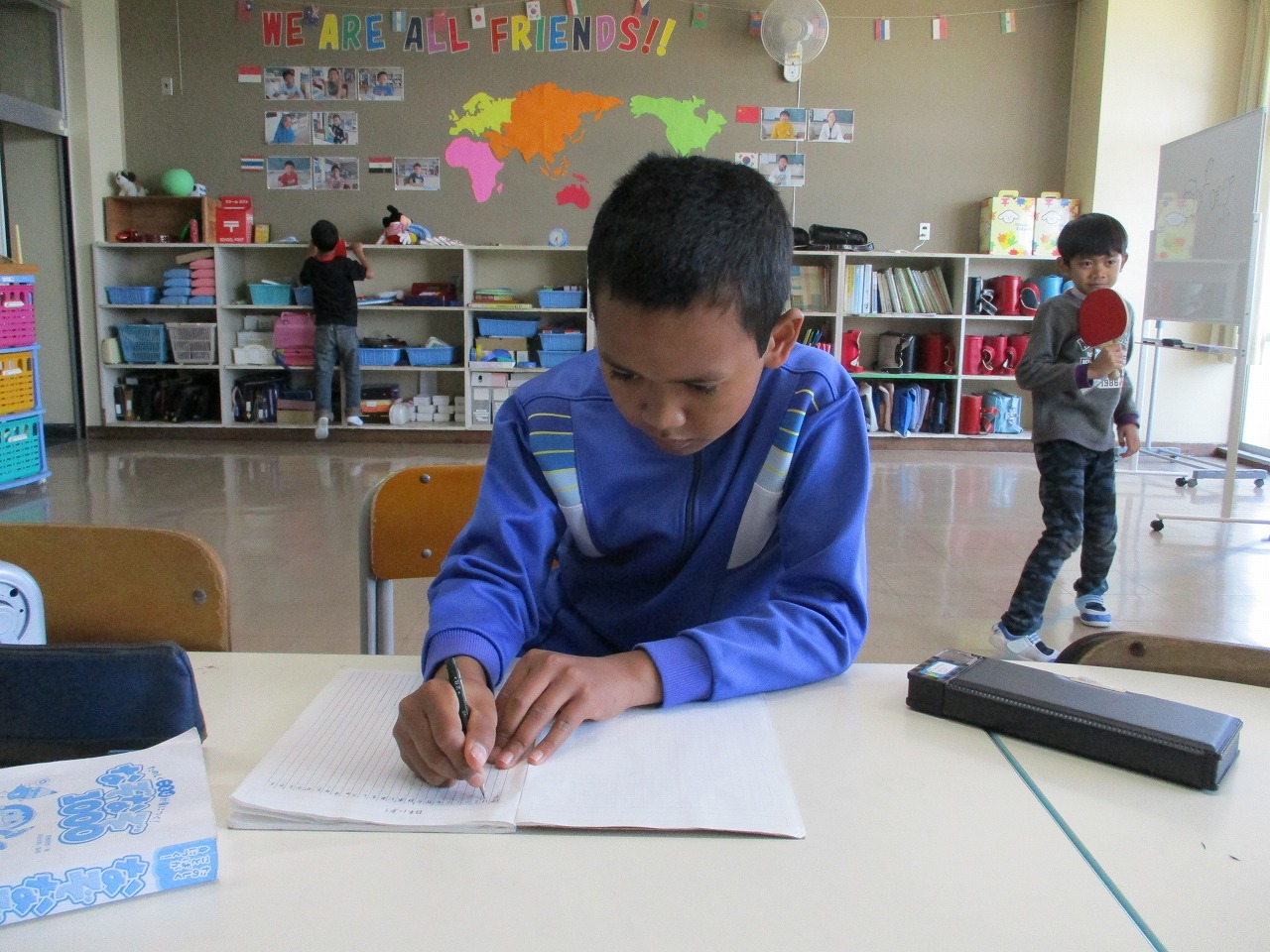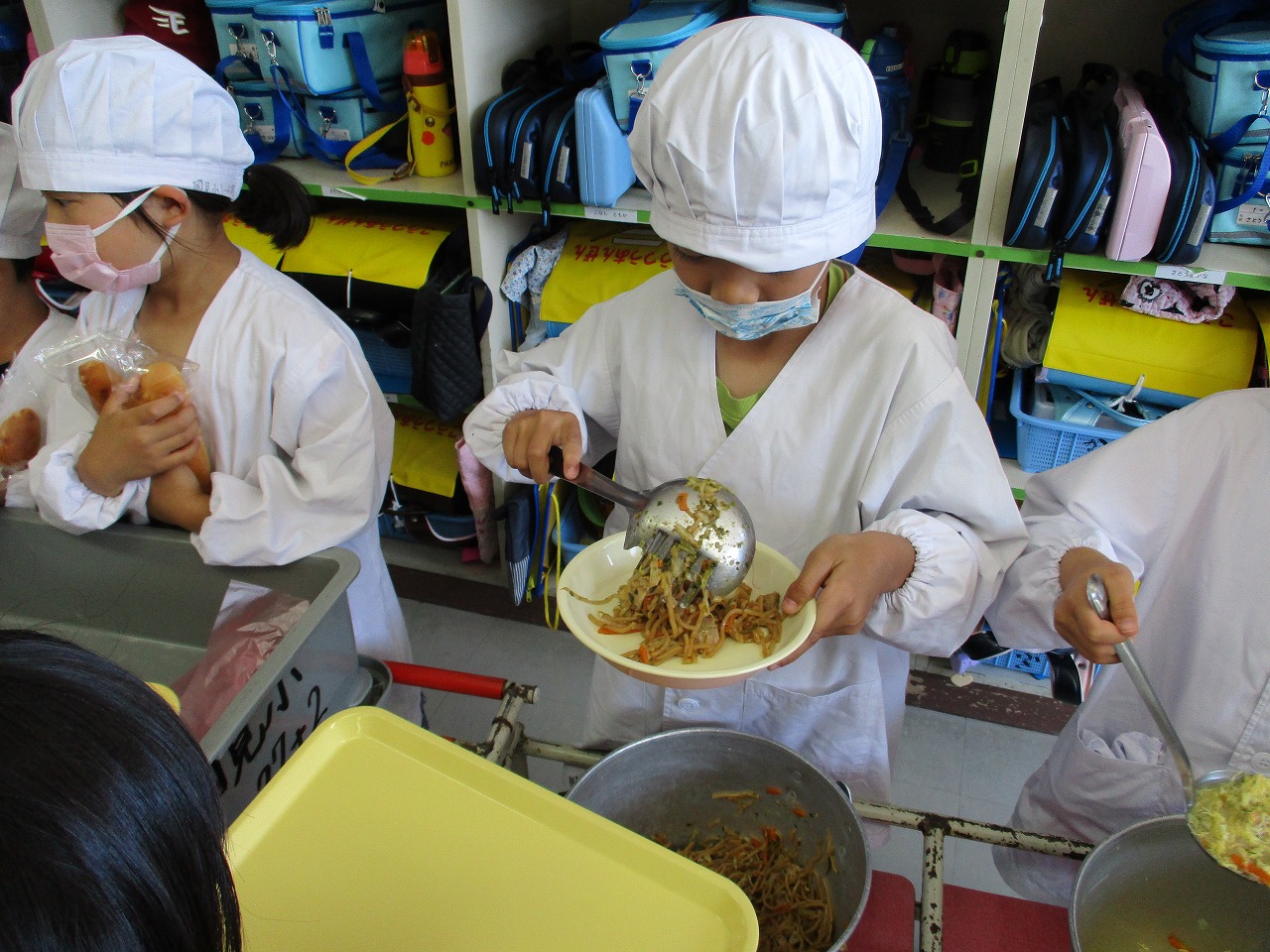Welcome to our school
 International class is set-aside for
children who have returned from overseas, or who have recently
arrived in Japan, and wish to improve their Japanese. Apart from
Japanese, other supplementary lessens are decided upon discussion
with the homeroom teacher. The grade level of the child is also a
factor in deciding the number of lessens per week.
International class is set-aside for
children who have returned from overseas, or who have recently
arrived in Japan, and wish to improve their Japanese. Apart from
Japanese, other supplementary lessens are decided upon discussion
with the homeroom teacher. The grade level of the child is also a
factor in deciding the number of lessens per week.
Education system in Japan and support for international children
 Children enter elementary school in the
April following their 6th birthday and study there for six years.
After graduating from elementary school, students attend junior
high school for three years. After graduating junior high school,
students have completed their compulsory education. They may then
enter senior high school, where they will normally study for an
additional three years.Tuition is free in public elementary and
junior high schools, as well as at the elementary and lower
secondary levels in schools for the deaf, blind, or special needs.
Children enter elementary school in the
April following their 6th birthday and study there for six years.
After graduating from elementary school, students attend junior
high school for three years. After graduating junior high school,
students have completed their compulsory education. They may then
enter senior high school, where they will normally study for an
additional three years.Tuition is free in public elementary and
junior high schools, as well as at the elementary and lower
secondary levels in schools for the deaf, blind, or special needs.
School Subjects

In elementary school, students study Japanese (kokugo), social
studies (shakai), arithmetic (sansuu), science (rika), life
studies (seikatsu), music (ongaku), drawing and crafts (zuga
kousaku), home economics (katei), physical education (taiiku) and
English language. English became a required standard course for
all elementary schools. Other subjects such as moral education
(doutoku), special activities and integrated studies are also
taught. In junior high school, students study Japanese (kokugo),
social studies (shakai), mathematics (suugaku), science (rika),
music (ongaku), art (bijutsu), physical education (taiiku),
technical arts, home economics (gijutsu katei) and foreign
languages (gaikokugo–usually English), etc. Students also study
moral education, special activities, and integrated studies.
※Classes are taught in Japanese.
Textbooks & Classification system

Textbooks used in elementary and junior high schools are free of charge. Textbooks are also free for children with disabilities. There is no system for skipping grades during the compulsory education period. A student advances from one grade to the next based on their age. Children who are born from April 2nd to April 1st of the following year will be in the same grade. A student’s Japanese grade might be different from their grade in a country where grade advancement is based on abilities. In Japan, student abilities are tested through entrance examinations for senior high schools.
Procedures
Parents need to go to the City Hall or the Ward Office to
register as foreign residents. Parents should also inform this
office of their desire for their child to attend a Japanese public
school. After doing so, they will receive some forms and should
fill out these forms and submit them. After that, they will be
told the name of the school their child should attend and where it
is located.
However, when a child’s Japanese language ability is low, there is
the possibility in some areas for the child to attend another
school that has more Japanese language assistance for non-native
speakers. Parents should consult the Board of Education for more
information about such matters. Please remember, in Sendai, Kunimi
and Hachiman elementary schools have classes for international
students now.
Generally speaking, we teachers who teach at the elementary,
junior or senior high school level are educated at higher
education institutions. Therefore, teachers have completed the
curriculum for teacher training and become certified as teachers
prior to teaching in public schools. But always we need the
support of some specialists, like a keyboard player, a conductor
for a brass band, a native English speaker, and those who teach
us. And we are still given opportunities to enhance our teaching
skills.
The number of classes students have and the time they leave school
each day vary according to the day of the week and the grade. In
6th grade, usually five or six classes are held a day; one class
is usually 45 minutes in elementary schools and 50 minutes in
junior high schools. There are no classes on Saturdays and
Sundays.
In elementary school, the class’s homeroom teacher teaches most
regular education subjects and other teachers may take over
teaching for specialized subjects.
For children who cannot understand Japanese, there is an
international class where a teacher or volunteers assist them with
Japanese and other subjects in some schools like Kunimi and
Hachiman. The homeroom teacher will discuss the frequency and
duration of the assistance needed depending on the ability of the
child. Teachers are always keeping an eye on the children and
trying to encourage them.
Fortunately children begin to understand many Japanese words soon.
Cleaning Hour

In Japanese schools, students share responsibilities for cleaning the classrooms, school grounds, etc. Some foreigners might be surprised at this, but most foreign students try to work well with Japanese students. Therefore, thanks to Cleaning Hour, they have a big chance to get to know each other without needing the same language.
Lunch Hour (Kyuushoku jikan)

In elementary and junior high schools, school lunch is provided
as a part of the educational activities. School lunches are
planned so that students will learn the proper way of eating and
suitable or good human relationships. This is done through
students serving the food, cleaning up afterwards, and eating a
well-balanced diet while having fun together. In this way,
students can learn to live healthily.Spoons and chopsticks are to
be brought from home daily and dirty utensils are to be washed at
home.
Parents/guardians pay for the cost of the ingredients of school
lunches, and the amount is about 5,000 yen a month.
School life
Japanese schools start in April and end in March of the following year. The school year is usually divided into two or three terms. In Sendai, we have 1st term and 2nd term, so it is a 2-term/semester system. The type of activities and school events and how and when they are carried out vary from school to school.We introduce you to several school lives here.
A Finnish girl(got understood Hiragana after only one month”). Classmates supported her in natural interaction. They communicated in Japanese and English.In April, she studied beginning Japanese in the international classroom with 5 classes per week. But in July, she only needed 2 classes per week.
An Egyptian boy, is reading Japanese handouts with his friends. He speaks and read Japanese well, so he had stayed entirely in his classroom except during their welcome activities.
In spring, many parents came and enjoyed the Sports day. Depending on grade level, there are various kinds of events, including dances.
This is an excursion to Mt. Izumigadake. These 5th grade students
stayed overnight at mountain lodge.
School fees & Financial assistance
As textbooks will be provided for free there is no need to buy them.
Money for student materials will be collected 3 times. The fees for
student materials amount to approximately 10000 yen for a year. The
purpose of the fees will be stated in the monthly school newsletter.
I’ll translate it into plain English: Depending on the grade and
level, the purchase of learning tools, keyboard, paint set, and a
recorder may be required. But the schools for foreign students have
good programs that do not need to be fully funded by parents. So I
don’t think you need to pay much money for their school life. Please
ask me before you buy school items.Financial assistance can be received from the Board of Education of Sendai city for school supplies and school lunches (if it is determined that there is a need for this). Please consult the school staff who is in charge of financial assistance and review the application form. In Japan, education prices are high, and many families apply for assistance (even those who might not consider applying because they are rich in their home country).
School Rules
School is a place where many children gather. Therefore it’s important that every child tries to get along with others. School has its own rules to prevent problems. Here are typical rules at Japanese Schools: Please do not bring unnecessary money, food, or toys to school.Please come to and from school via the pre-determined route on
foot.
Please change your shoes in the school building.
Please contact the school before classes or morning events begin
in case Absences, Tardiness, early dismissal, etc.
We are looking forward to seeing you at our school.
Thank you.
School Info.
| school name | Sendai Kunimi Elementary School |
|---|---|
| postal code | 981-0943 |
| address | 2-16-1 Kunimi,Aoba,Sendai,Miyagi |
| phone number | 022-234-6383 |
| e mail | kunimida@sendai-c.ed.jp |